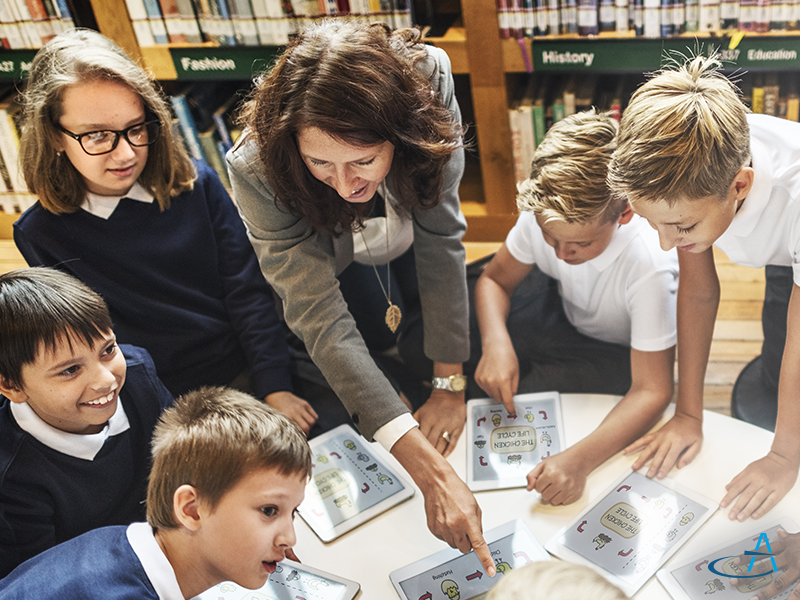First things first, technology hasn’t changed the fundamentals of teaching and learning but it sure has transformed how the classroom looks and the role of teachers in it. From electronic whiteboards and tablets to 3-D interactive models and adaptive learning programs, technology offers so many opportunities to support student learning. In fact, 91% of administrators say the effective use of educational technology is critical to their missions of high student achievement. The majority of teachers agree that technology can improve student outcomes and helps them respond to different learning styles and needs. Here’s how.
Student-Centered Learning
For centuries, teachers have imparted information and students have absorbed it. Technology provides opportunities for students to take a more active role in their learning and helps them become more engaged. Today, teachers serve as guides and coaches, creating meaningful learning experiences for students and facilitating the discovery of knowledge.
Learning Without Limits
Fixed times, places and paces for learning no longer exist. Learning can happen anywhere, anytime thanks to mobile devices and digital curriculum. Students in the same grade, taught by the same teacher may be working on vastly different projects or lessons depending on their needs and interests. Technology provides the tools and resources that make it possible for teachers to create, manage, deliver, and assess these diverse learning paths.
Collaborative Classrooms
From Twitter and Snapchat to Skype and email, there are countless digital tools that allow students to easily communicate and collaborate with students in their classes or around the world. Whether it’s a teacher answering a student’s question from home via instant message, or students in Iowa working on a project with students in Australia in a Google Hangouts, technology facilitates collaborative learning in ways we couldn’t imagine even as recently as ten years ago.
Data Drives Instruction
Most digital curriculum has built-in, automatic data collection, giving teacher unprecedented insight into how, when and what students are learning. Teachers can know instantly which students “got” a concept and which didn’t without having to wait for formal end-of-unit assessments. Data collection and reporting systems also make it easier to look at student progress over time and identify specific areas–whether academic, social or behavioral–where students need support. The increased accessibility and usability of data that technology provides has the most potential to have a powerful impact on student achievement.
Everyone’s Needs are Met
Technology has made it possible for each student’s individual learning needs to be addressed. Whether that’s text-to-speech that supports English language learners or robots that make practicing social skills more comfortable for students with autism, technology can help teachers adapt and enhance learning to meet students where they are and personalize instruction.
What are some new ways you’re using technology this school year to connect with students and guide their learning? We’d love to hear! Let us know in the comments below.
